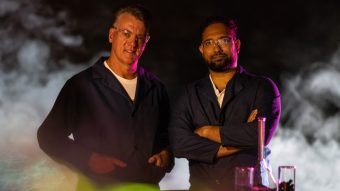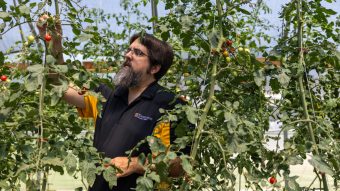
Published on Show Me Mizzou Dec. 19, 2024
The “bob-white” call of the Northern bobwhite quail was a familiar sound to trailblazer Katheryn Louise Paullus, who dedicated her early career to studying the bird in Missouri’s fields. Paullus, who died in April at 100, was Mizzou’s first female graduate in what was then called the School of Fisheries and Wildlife, where she completed her degree in 1947 and became one of the university’s earliest scientists to focus on bobwhite quail.
Her research offered early insights that would aid future conservationists and establish avian studies as an important field within wildlife science, a specialty still emerging at the time.
In a recent article for Conservation Federation of Missouri Magazine, Joe G. Dillard and Mary E. Paullus Bangert (Katheryn’s niece) recalled the obstacles she faced. Professors warned her of the limited job openings for women in conservation and noted that wildlife work was “not an easy field for a woman to enter.” The writers added, “When asked about being the only woman in wildlife conservation at Mizzou, she simply said, ‘I guess nobody thought of it back then.’” Paullus’ 1947 study on quail wing length, molt and productivity, published in Wildlife Review, would still be cited more than 20 years later.
Growing up on a family farm in Southeast Missouri, Paullus was surrounded by her family’s conservation practices, which involved working closely with MU Extension to protect soil, water and timber resources. This background shaped her conservation
philosophy and rooted her interests in practical, hands-on experience that would become a guiding influence in her
career and inspire future female conservationists.
Throughout her life, Paullus held teaching positions at institutions including Rhodes College, the University of Tennessee at Martin and the University of Colorado. Her roles often combined fieldwork with mentorship. As a member of Colorado’s Foothills Audubon Club, Paullus actively documented local bird species well into her 90s, tracking black-capped chickadees, common goldeneyes and dozens of other native birds in her area. Her legacy as a conservationist and educator endures across decades of change in wildlife science and environmental awareness.
To read more articles like this, become a Mizzou Alumni Association member and receive MIZZOU magazine in your mailbox. Click here to join.



